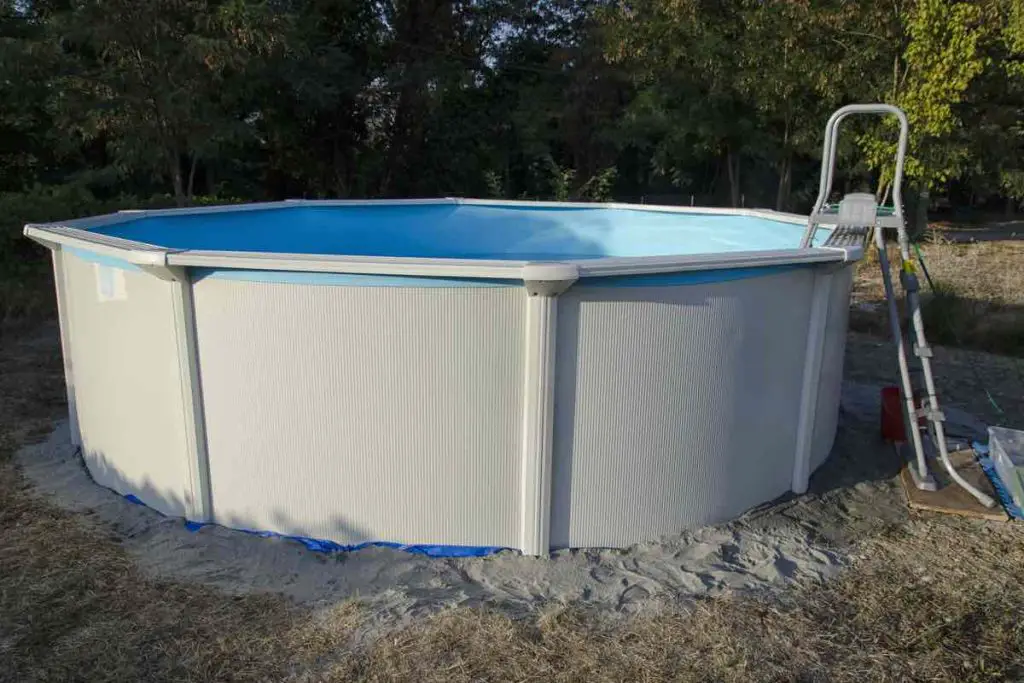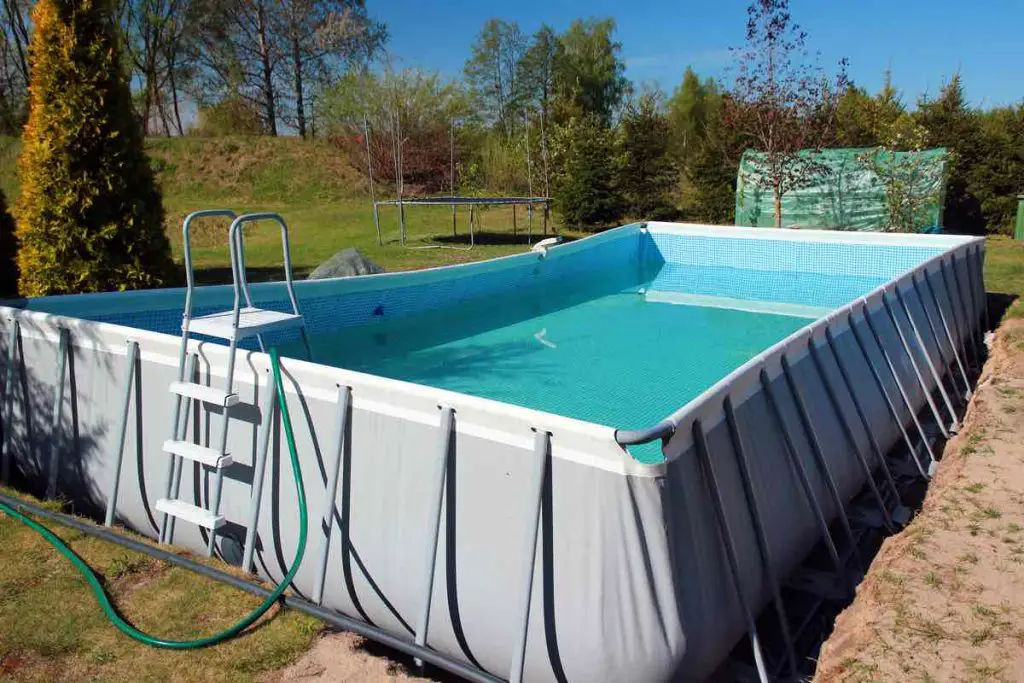Swimming pools are a great staple in many American backyards. If you’re thinking about buying an above-ground pool for your backyard, you might be wondering whether or not you should put pavers under your pool legs as a foundation.
You should put pavers under your pool legs to level out your pool and prevent sinking. It helps to distribute the weight by providing extra support for the pool legs, which can be beneficial if you have a large pool. They can also help protect the pool’s liner from rubbing against the ground.
However, there are a few things to consider before you decide to put pavers under your pool legs. The rest of this article will look at both sides of the argument to help you decide.

Why Paver the Right Material To Put Under Your Pool Legs
Above-ground pools are a great addition to any home. They provide a place to cool off in the summer and can even be used for exercise. But one of the most important things to consider when installing an above-ground pool is what material to put under the legs.
Pavers are an excellent choice for this purpose. Here are four reasons why pavers are the right material to put under your pool legs:
Pavers Help To Level Out Your Pool and Make It More Stable
If you have an unlevel Intex pool or an above-ground pool with water in it that’s not level, you may want to consider using pavers to level it out.
Simply place them under the legs of the pool that are higher off the ground. This will help distribute the weight of the pool more evenly and prevent it from tipping.
Pavers can help create a flat surface around your pool, which can make it easier to keep the area level and prevent the pool from shifting.
Pavers Act as an Extra Support for the Pool Legs
Pool deck pavers can provide extra support for your pool’s legs and help keep them from sinking into the ground over time.
For example, if one of the legs of your pool were to break, having pavers in place would help cushion the fall and prevent severe damage to the rest of the pool.
This can be a big help in making your pool more stable and preventing problems with the structure of your pool in the future.
Pavers Help To Protect Your Pool Liner
Pavers can actually help to protect your pool liner from being damaged by the legs of your pool. This is because when you have pavers under your pool legs, it creates a buffer between the hard surface of the concrete and the liner. This can help to prevent any holes or tears from forming in the liner.
Therefore, a good paver job can help you enhance your pool’s overall look besides providing protection for the pool and its liner.
Installing Pavers Under Pool Legs Is Easy
Pavers under pool legs are the best option for stability and a long-lasting foundation. They’re also easy to install and can be done by just about anyone.
If you’re considering adding pavers to your pool area, be sure to speak with a professional to confirm they’re correctly installed.
Like a D-I-Y Intex pool installation, if you choose to install pavers yourself, be sure to follow the instructions carefully. It’s important to lay the pavers evenly and securely so they will last for years.
Installing pavers around your pool is a relatively easy project that you can do yourself. Just measure the area where you’ll place the pavers, so you know how many you need. Also, make sure to check the leveling on every pool joint after putting the pavers under the pool legs. [XX Reasons Why Pavers Around a Pool Sink]
I recommend you use the Edward Tools Magnetic Torpedo Laser (available on Amazon), which has durable aluminum built to withstand drops and guarantees perfect precision.
When You Shouldn’t Put Pavers Under Your Pool Legs
While putting pavers under your pool legs gives your pool a ton of benefits, it can also make you regret it if you don’t know when and how you should install them.
If you’re considering putting pavers under your pool legs, there are a few things to keep in mind:
- Pavers can be more expensive than other materials. If you’re on a budget, then putting wood blocks or cut plastic paddings from an old barrel will make more sense.
- Concrete pavers can be difficult to install if you don’t have any experience. It’s possible you end up with too high or too low of a pool level. This can be caused by incorrect leveling of the ground surrounding your pool.
- Pavers can settle over time, which can cause your pool to become unlevel. Settling pavers is usually caused by one of two things: either the ground wasn’t properly prepared before the pavers were laid, or the pavers weren’t adequately compacted after they were laid. Either way, it’s important to have a professional check your paving job to ensure it’s been done correctly.
However, if you’re thinking about putting pavers under the legs of an existing pool, you’ll need to do some digging to level the ground.
If the ground isn’t level, you’ll have to level it in order to achieve the desired pool height. If you don’t level your ground, you may notice that one part of your pool seems lower than the rest or that your waterline is crooked.
For a job perfectly done, I recommend using laser levelers like the Qooltek Multipurpose Cross Line Laser (available on Amazon). It consists of a leveling bubble that is triple-positioned and a calibrated 8ft (2.4m) measuring tape for accuracy.
Therefore, fix the budget first, learn the process thoroughly, gather all necessary materials, and then take a leap forward.

Final Verdict
When installing a pool, many people wonder what the best material is to put under the legs. There are many options, but the paver is by far the best.
Paver is a robust and durable material that can withstand the weight of a pool and the constant movement of water. It’s also slip-resistant, making it a safe choice for pool legs support.
On the other hand, they can be a bit expensive and time-consuming to install. Therefore, it’s best to weigh the pros and cons thoughtfully beforehand.
Sources
- The Above Ground Pool Builder: Can I put an Above Ground Pool On Pavers?
- Fun in the Yard: What To Put Under Above-Ground Pool Legs
- The Pool and Deck: Can I Put an Above Ground Pool on Pavers?
- My Perfect Pool: What to Put Under Intex Pool & Above Ground Pools
- Easy Clean Pool: Can An Above-ground Pool Be Put on Pavers?
- YouTube: Should I use pavers for install on a round soft side above-ground pool on ground? Answer is YES!
- Galaxy Home Creation: How to Install an Above Ground Pool
- H2ouse: How Unlevel Can an Intex Pool Be: Staying Safe Instead of Sorry
- Swimmingpool.com: Glossary
